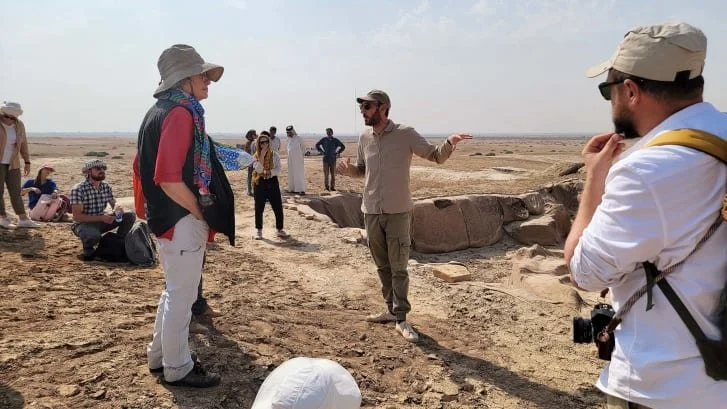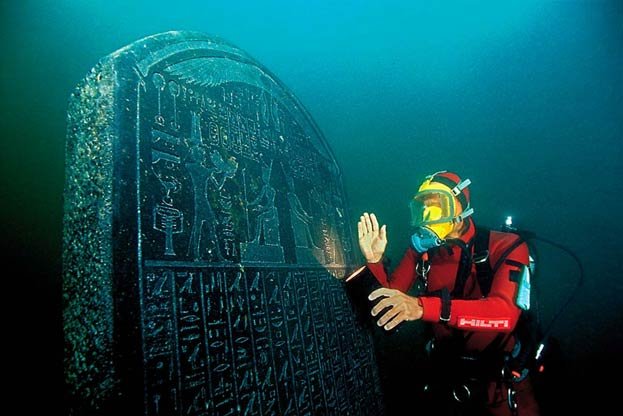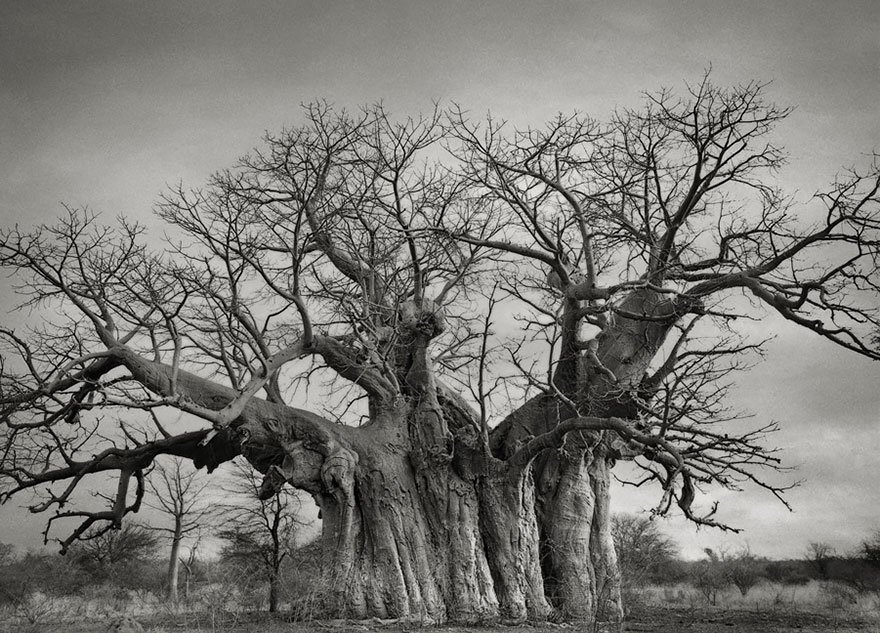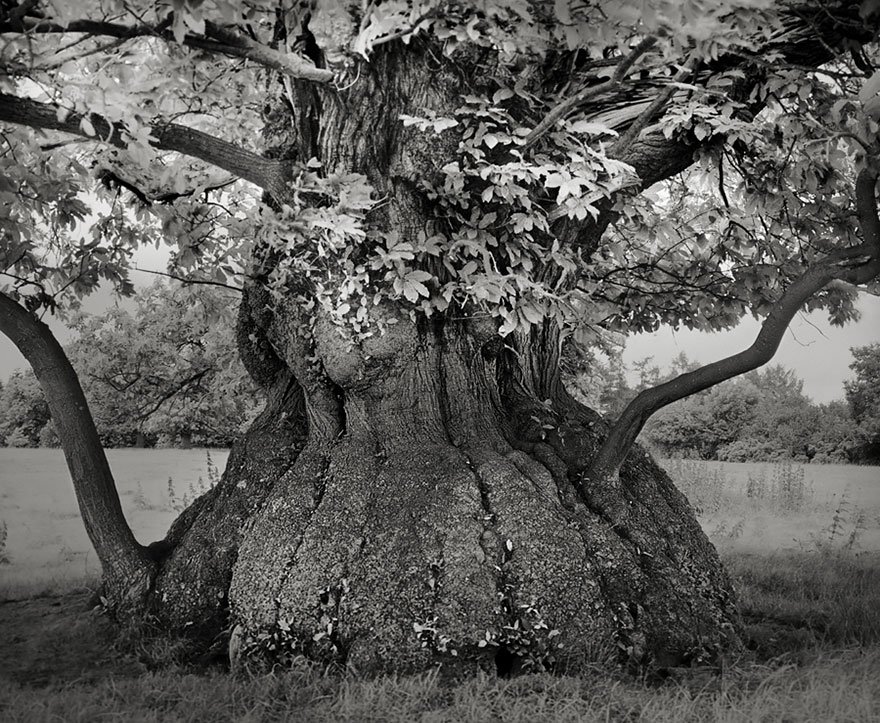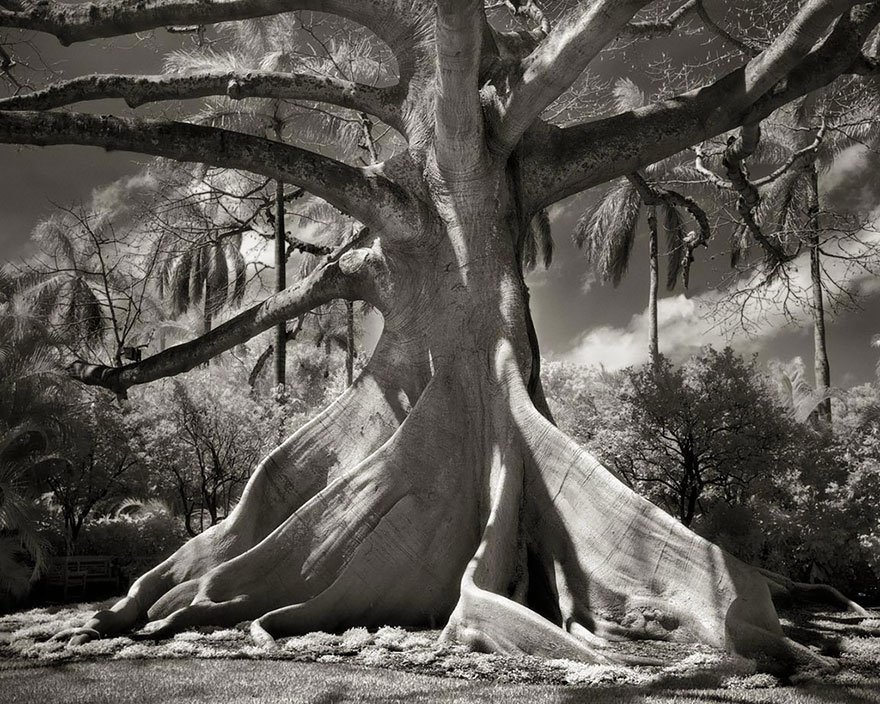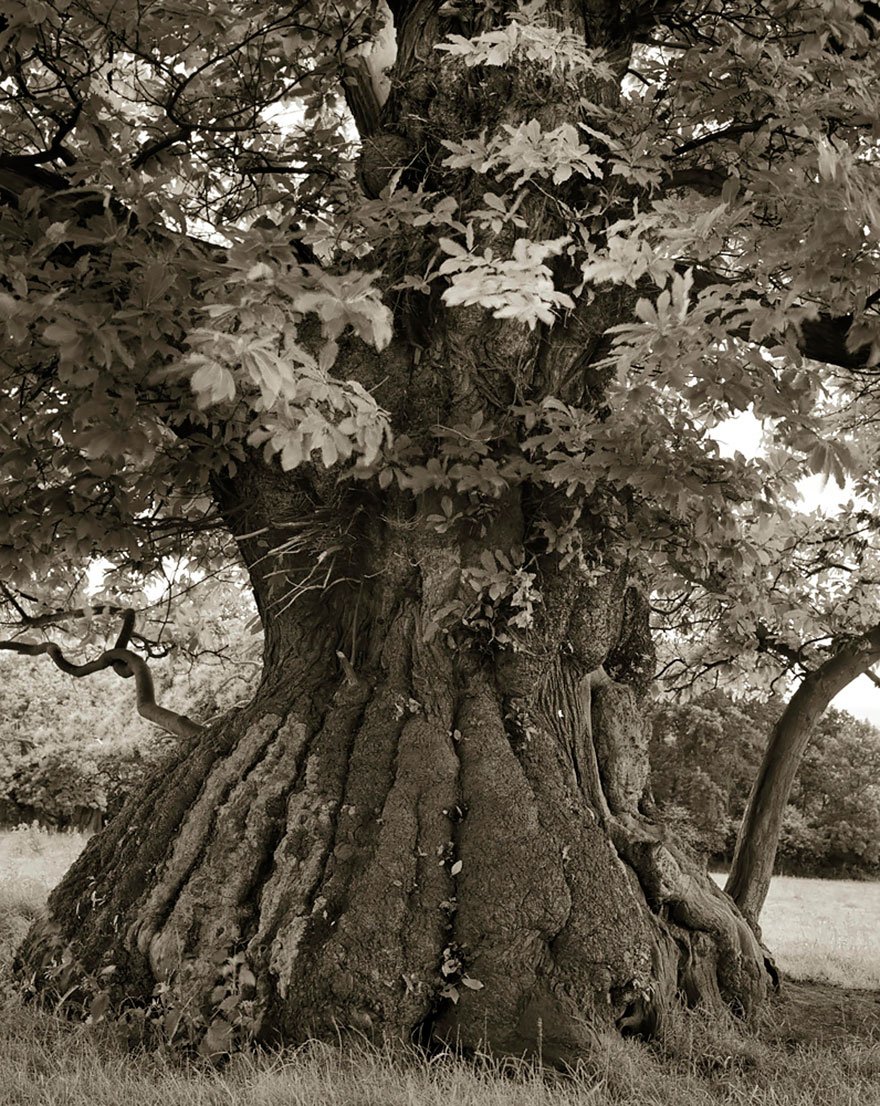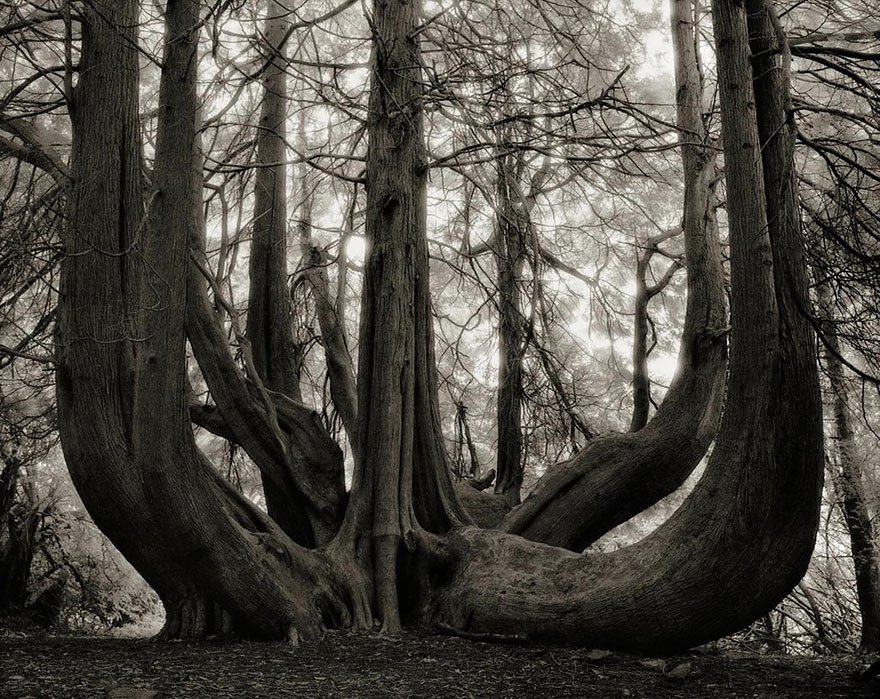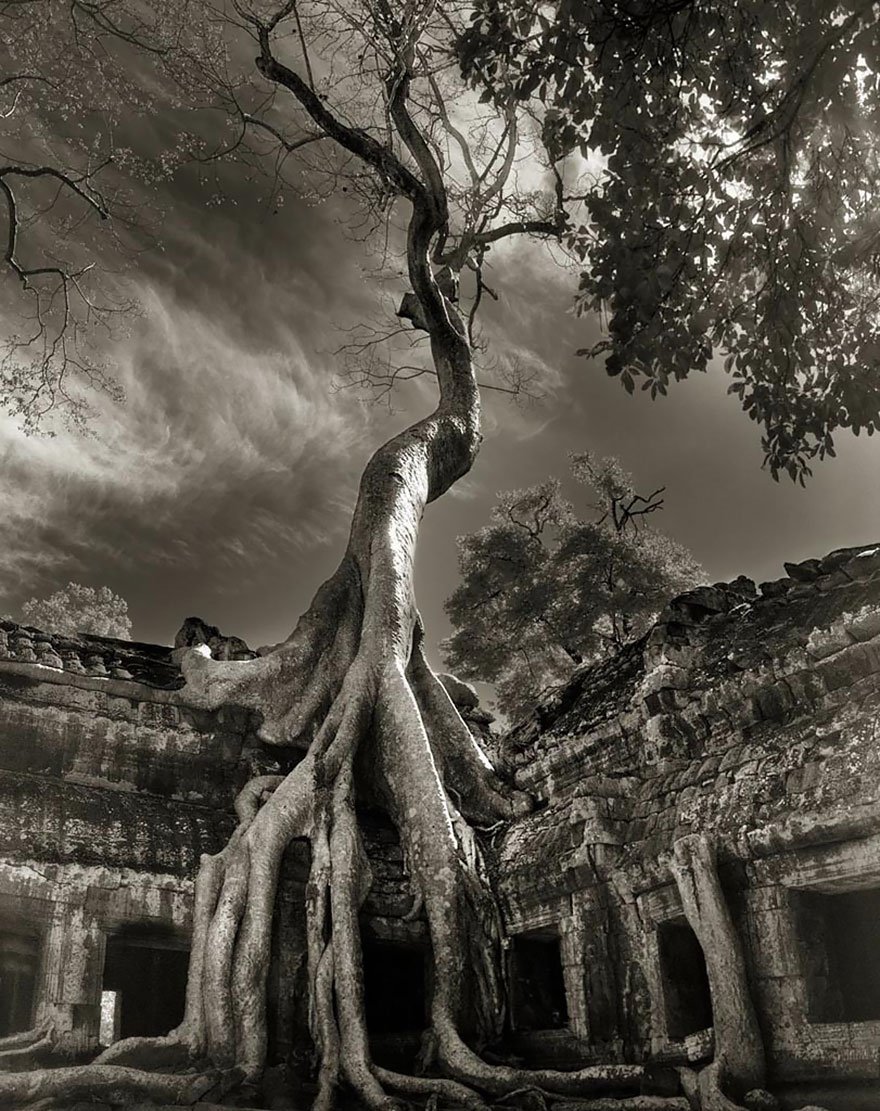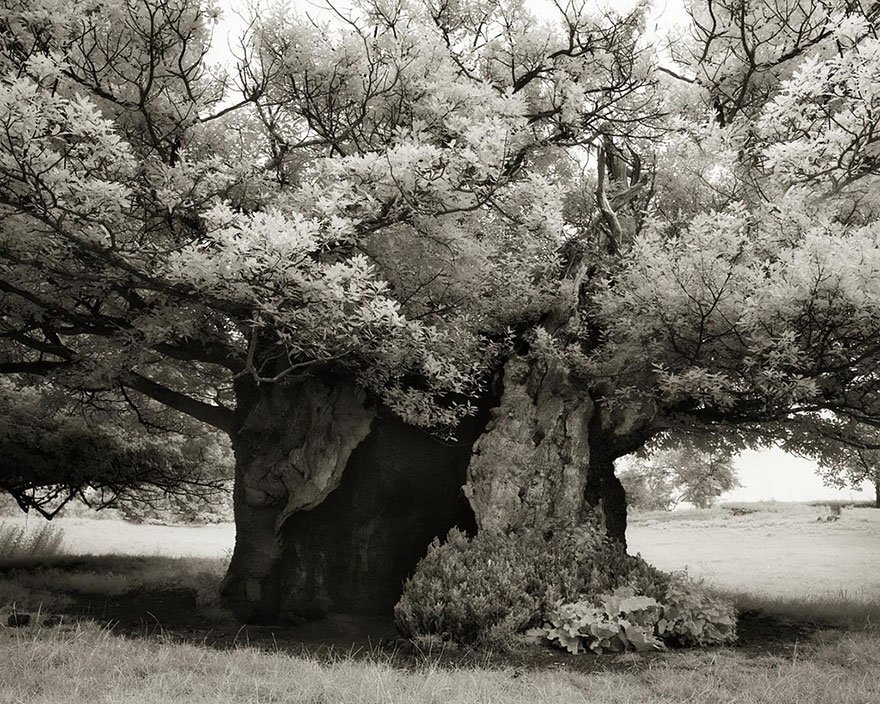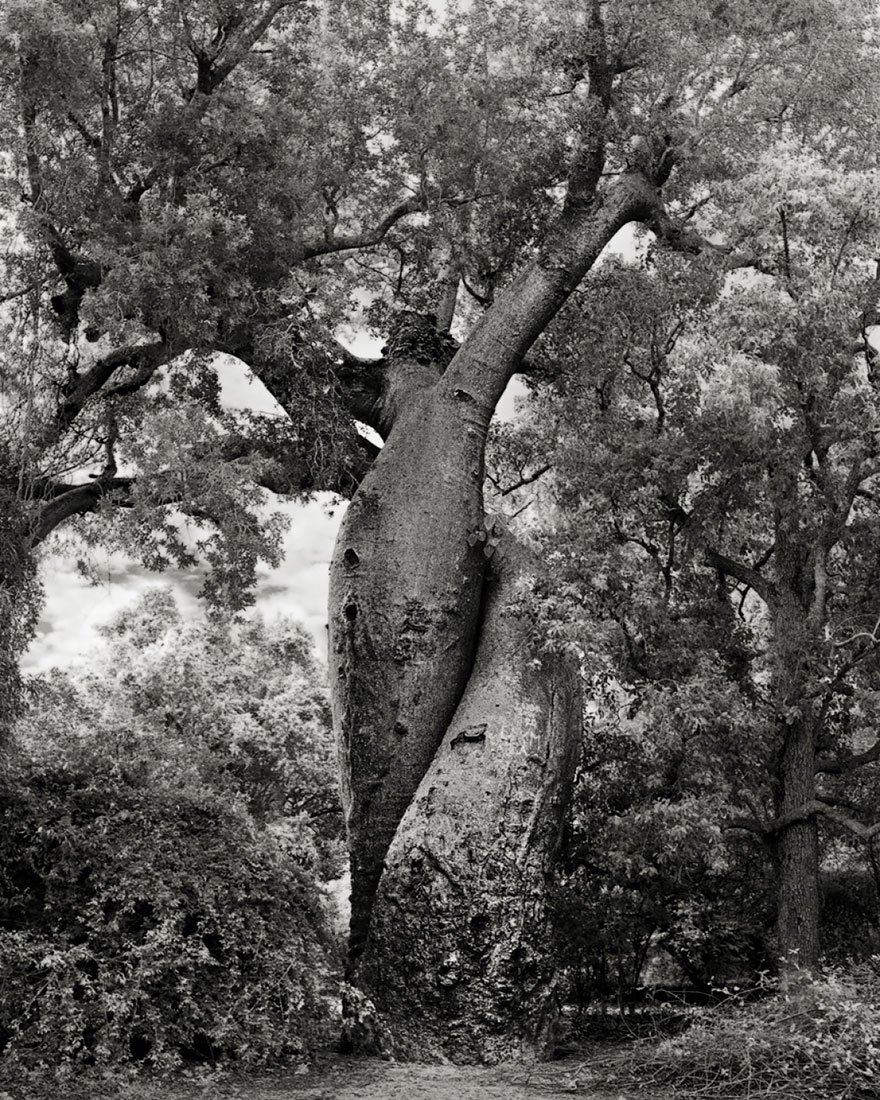Humanity has existed on the planet for about three hundred thousand years. We have survived many wars, nuclear bombings, famines and deadly pandemics. But what if we were on Earth two hundred million years ago? Most modern threats to humans didn't yet exist then. However, there was something worse than a hydrogen bomb and incurable diseases. Dinosaurs. What would we do in a world full of huge lizards? Could we have lasted even a day on the planet during the Jurassic period? Forget everything you learned about dinosaurs and this era from Steven Spielberg movies. Today we are going to face the truth from a scientific point of view.
Scientists Have Found Why Megalodon Went Extinct
Natalie Wood, Bruce Lee, Notorious B.I.G. The killers of these people haven’t been found to this day. But there are criminal cases full of questions and inconsistencies that remain unsolved for a few million years.
Who killed the most enormous cold-blooded prehistoric monsters called the Megalodon and the Titanoboa? The investigation hits a dead end because it's hard to comprehend who or what could defeat those monsters. Eyewitnesses are long gone, and the evidence was destroyed by time.
In this video, we’ll reopen the investigation and find out: how did a lethal dose of radiation end up at the scene? Can we trust the white sharks’ alibi? And most importantly, who killed the prehistoric mega predators?
Archaeologists find 5,000-year-old tavern -- including food remains -- in Iraq
Eating out seems to have been as popular 5,000 years ago as it is today, with archaeologists in Iraq uncovering an ancient tavern dating back to 2,700 BC.
Researchers working in the ancient city of Lagash discovered that the pub, hidden just 19 inches below the surface, was split into an open-air dining area and a room containing benches, an oven, ancient food remains and even a 5,000-year-old fridge.
They initially found themselves in the open courtyard space, an area that was difficult to excavate, being "open and exposed to the outdoors," Reed Goodman, an archaeologist from the University of Pennsylvania, told CNN.
After returning to the mysterious courtyard a few months later, in fall 2022, field director Sara Pizzimenti, from the University of Pisa, broadened the trench.
The team then discovered the industrial-sized oven, a moisture-wicking ancient "fridge," to keep food cool, and dozens of conical bowls, many containing fish remains, revealing the purpose of the courtyard to be an outdoor dining area.
"I think the first feature to show itself was this very large oven and it's actually beautiful," Goodman said. "From various burning episodes and deposits of ash it left a sort of rainbow coloration in the soils and the interior is framed by these big bricks."
Lagash, now the town of al-Hiba, was one of the oldest and largest cities in southern Mesopotamia -- occupied from the fifth millennium until the middle of the second millennium BC and encompassing an area of almost two square miles.
It has since become an important archaeological site, with excavations restarting most recently in 2019 as part of a joint project between the Penn Museum, the University of Cambridge and the State Board of Antiquities and Heritage in Baghdad, using new techniques such as drone photography and genetic analysis.
Previous excavations focused on religious architecture and understanding the elites, but Holly Pittman -- director of the Lagash Archaeological Project and curator of the Penn Museum's Near East section -- concentrated on non-elite areas during these latest excavations to provide a broader understanding of ancient cities.
Uncovering a tavern supports the perspective of Pittman and her team that society was not organized into just elites and enslaved people -- the previous prevailing view -- but included an ancient middle class.
"The fact that you have a public gathering place where people can sit down and have a pint and have their fish stew, they're not laboring under the tyranny of kings," Goodman said.
"Right there, there is already something that is giving us a much more colorful history of the city."
New discovery inside Great Pyramid of Giza reveals hidden secrets
Archaeologists in Egypt have uncovered a hidden corridor inside the Great Pyramid of Giza. The country's former Minister of Antiquities is calling it "the most important discovery in the 21st century." Watch the video below to find out more!
This Ancient Book Found In Egypt Revealed A Terrifying Message
In the following video we will investigate an ancient book found in Egypt, which revealed a terrifying message. Enjoy!
Basque Origins | DNA, Language, and History
From the Spanish and French valleys of the Western Pyrenees to the Atlantic coast of the Bay of Biscay, the historically isolated Basque people have lived for millennia.
In this diverse and fertile region, the Basque have retained their unique non-Indo-European language and dialects, Euskara, as well as their own cultural and regional identities. As the surrounding populations of Europe have shifted over the ages again and again, the Basque people remain.
Known today by its inhabitants as Euskadi, País Vasco, or Euskal Herria, the Basque Country has become a region famous for its cuisine and wine of ancient grapes such as Tempranillo, of traditional fishing villages and picturesque cities. Tourism has replaced much of history’s strife. But defining Euskal Herria is as difficult as defining the word Herria itself. In Euskara its root herri can mean everything from village to population to nation. Euskal Herria is the collective identity of this ancient people.
Why Couldn't Archaic Homo Sapiens Break Out of Africa?
In this video, we'll explore the question of whether or not archaeologists are lying about the origins of modern humans including jebel irhoud in Morocco. We'll look at the evidence and discuss whether or not the archaeological record supports the theory that modern humans evolved from earlier Homo species in Africa.
Is it possible that archaeologists are mistaken about the origins of modern humans? Or is there evidence that suggests we evolved from earlier Homo species? In this video, we'll discuss the evidence and decide for ourselves whether or not archaeologists are lying about modern human origins.
Medieval Contact: China meets Africa
Booming cities on the eastern coast of Africa come in contact with dynastic China in the 8th century. For centuries, rumors and sporadic contact bring the two distant worlds ever closer. Then, in the 15th century, Zheng He leads a massive expedition to Africa. This is what he saw. Enjoy!
Petralona Man Challenges Out Of Africa Theory?
Back in 1959 a skull was discovered in a cave in Petralona Greece, the skull has been dubbed Petralona Man or Archanthropus Petralona and has been scientifically dated to be between 240,000 and 160,000 years old. According to Dr. Poulianos the Petralona skull is around 700,000 years old and that makes this skull the oldest human Europeoid unearthed in Europe.
According to his research the skull did not originate in Africa but evolved independently in Europe. Greek palaolithic palaeoanthropology remains largely unexplored and should be researched more as more excavations are needed in this area in hopes to uncover more fossils to clarify the questions we still have up until this day.
At this point in time, no early modern human specimen are known in this area, but that doesn’t mean that they aren’t there, it means that because there hasn’t been much focus in the are they are most likely not yet found. The Petralona skull shows the importance of this area when it comes to a deeper understanding greek and european prehistory, but it is important to look at the facts, not at what we would like to believe.
Earliest Western Account of India + Caste System / 300 BC Megasthenes
This is the first eyewitness description of India by someone from outside of India. Watch the video below to find out more!
New Technology Reveals Secrets Of The Mona Lisa
In today’s video we will be exploring how new technology reveals secrets of the Mona Lisa. Watch the video for more and enjoy!
15 Secrets That Vatican Doesn't Want You To Know
In the video below we will analyze 15 secrets that Vatican doesn’t want you to know. Watch the video to find out more!
The Rubber People: The Amazons First Inhabitants
In this video Joe Rogan and Graham Hancock talk about the incredible story of the Olmecs, also called the rubber people (by the Maya), as they were a rubber producing population. First recorded population that inhabited the Amazon, although still shrouded with mystery.
Mount Athos: Molotov wielding monks and a ban on women
High atop a mountain, perched over the sea, nestled within the walls of secluded monasteries, lies a sanctuary of tranquillity where the only sound is the gentle whispers of the wind, soft prayers, and the melody of peaceful contemplation.
And you’re never gonna get in. This place is the Holy Mountain, Mount Athos, a self-governing state within Greece, this 10km border and fence separates this monastic state from the rest of the world.
It’s the spiritual centre of Eastern Orthodox Christianity, they’re the ones with the black robes, different crosses, and fancy icons. Athos is like an Orthodox Vatican and Tibet rolled into one. Women have been banned from Mount Athos for a 1000 years. Athos is the only state in the world with an all male population.
So what is Mount Athos, what is life like there, and are Molotov Cocktails an ecumenical matter? Well, let’s find out!
How Did a Greek Hoplite Go to War?
In this live history documentary we step into the shoes of a Greek Hoplite of the 5th century BC to see what it was like to prepare for war. We begin with a quick discussion of the socio-political status of warriors in ancient greek history. Next we see what their weapons and armor were like and how these were equipped. This includes everything from their sandals to their greaves, their chest armor, helmets, shields, spears, and more. This includes a look at shield emblems such as the lambda of the Spartan army and the club of heracles used by Thebes. Finally we look at various camp activities which helped prepare the men for battle. This included sparring, racing, and bathing.
The Messed Up Origins of Ammit, Devourer of the Dead | Egyptian Mythology Explained
In today’s video we will talk about the Egyptian goddess Ammit, the devourer of the dead. Enjoy!
Discovering the Heracleion's Lost City: Meeting Myth Beneath the Waves
Almost 1,200 years ago, the Mediterranean Sea engulfed the city of Heracleion off the coast of Egypt. Before it sank more than a thousand years ago, it was one of the most significant commercial hubs in the Mediterranean. Like the way the modern world sees the city of Atlantis, Heracleion was long thought to be a myth. But after doing significant underwater investigation in the present-day Aboukir Bay, underwater archaeologist Franck Goddio eventually located the submerged city in 2000.
Heracleion had been reduced to only a few inscriptions and sentences in old texts by authors like Strabo and Diodorus before this recent discovery. When the mythical hero Heracles (also known as Herakles) first stepped foot in Egypt, a massive temple was built there, according to the Greek historian Herodotus (5th century BC). He also asserted that Paris and Helen of Troy paid the place a visit prior to the legendary Trojan War. The Greek explorer Strabo observed that the city of Heracleion was situated east of Canopus at the mouth of the River Nile, four centuries after Herodotus had traveled to Egypt.
The Seeker of Lost Cities Discovers Heracleion by Franck Goddio
A "pioneer of modern maritime archaeology," Franck Goddio is a well-known underwater archaeologist. In order to discover and study underwater archaeological sites, Goddio established the European Institute for Underwater Archaeology (IEASM) in 1987. On underwater archaeological sites, IEASM is renowned for having established a methodical methodology using geophysical prospecting methods. The crew can find anomalies on the sea floor by moving over the region in parallel straight lines at regular intervals. These anomalies can then be investigated by divers or robots.
In order to locate Canopus, Thonis, and Heracleion—all of which were thought to have been submerged beneath the Mediterranean Sea—IEASM started mapping the area around the port of Alexandria in 1992. In 1996, they expanded their research to include Aboukir Bay at the request of the Egyptian government. They were able to comprehend the topography and conditions that led to the area's gradual submersion thanks to this investigation. The group identified the areas of primary interest using data from historical documents. Aboukir Bay's survey covered a field of study that was 11 by 15 kilometers (6.8 x 9.3 miles).
The mapping of the Aboukir Bay began in 1996 and took a long time. They made the discoveries of Canopus in 1999 and Heracleion in 2000. The remains of the old city are covered with sediment, which explains why the location of the buried city of Heracleion remained concealed in the Bay of Aboukir for so long. Sand and silt that have been deposited when the River Nile exits are what make up the top layer of the ocean floor. By using precise magnetic maps, the IEASM team was able to find remnants, which gave the proof required to finally identify Heracleion's location.
Discovering Heracleion: A Submerged Lost City?
Heracleion, now submerged under the waters of the Mediterranean Sea, was once situated 32 kilometers (20 miles) northeast of Alexandria in ancient Egypt at the mouth of the River Nile. The huge metropolis served as both a major port for trade with Greece and a place of worship where sailors would offer gifts to the gods. Politically, the city was important because pharaohs needed to go to the Amun Temple in order to become the supreme ruler.
The ancient sunken city of Heracleion was discovered 10 meters (32.8 feet) below the surface and 6.5 kilometers (4 miles) from the present-day coastline in the western part of Aboukir Bay. Using cutting-edge technology and in cooperation with the Egyptian Supreme Council of Antiquities, IEASM was able to locate, map, and excavate the site.
Divers discovered the remarkably well-preserved city, with many of its riches remaining in tact after scraping away layers of sand and muck. They included the major Amun-Gerb temple, enormous pharaoh sculptures, several lesser statues of gods and goddesses, a sphinx, 64 ancient shipwrecks, 700 anchors, stone blocks with Greek and ancient Egyptian inscriptions, dozens of sarcophagi, gold coins, and bronze and stone weights.
Heracleion's Remains: Relics of a Lost Planet
The underwater archaeologists found a massive statue of Hapi, the god responsible for the Nile's inundation, that stood 5.4 meters (17.7 feet) tall among the ruins of the once-great metropolis. This was one of three enormous red granite statues from the fourth century BC that were found. A prehistoric stele with intricate and easily visible writing that was originally commissioned by Nectanebo I sometime between 378 and 362 BC was also found by the researchers in 2001.
Because Thonis was the name originally given to the city by the Egyptians while Heracleion was given by the ancient Greeks, it was possible for archaeologists to deduce from the writings on this old stele that Thonis and Heracleion were one and the same ancient city. The ancient city's name was changed to Thonis-Heracleion at that point.
Many statues and buildings that once stood tall and majestic in the great city may be seen in the breathtaking photos taken throughout the finding and recovery operation. In one image, a statue of a Ptolemaic queen made in Greco-Egypt stands eerily on the ocean floor, surrounded only by silt and darkness, while in another, the visage of a famous Pharaoh can be seen peeking up out of the sand.
Franck Goddio stated that the goal of the IEASM underwater excavations was "to learn as much as we can by touching as little as we can and leaving it for future technology" in an interview with the BBC in 2015. Around 2% of the site had been excavated at that time. The same clay deposit from the Nile that has long concealed the ancient city also shields the relics on the ocean floor from salt water.
IEASM takes great care to restore and preserve artifacts that are taken from their secret underwater refuge on board their ships and in laboratories. This process has taken days in some cases, while it took two and a half years to complete the massive Hapi monument, for example.
Knowing the causes of cities sinking into the sea
The metropolis, which was built on the Nile Delta, was considered to be breathtakingly beautiful and was crisscrossed by a massive network of canals. Heracleion, known as the Venice of the Nile, once held the title of the greatest harbor in the Mediterranean. The city apparently gradually lost importance as it disappeared under the water around the second half of the eighth century AD, according to excavations at the site. This raises the issue of why such an important city was destroyed.
A number of geological phenomena and cataclysmic occurrences are the causes. Geological studies conducted by the IEASM in collaboration with other institutions have revealed that the slow subsistence, the rise in sea levels, and regional phenomena related to the composition of the soil in the region all had an impact on the southeastern Mediterranean basin, creating the conditions for cities like Heracleion to sink into the sea.
Egypt's Lost Worlds exhibits
The Egyptian government, which owns the artifacts, granted IEASM permission in 2005 to organize a traveling display of the finds. Egypt's Sunken Treasures, the exhibition that resulted, traveled to significant cities in Germany, Spain, Italy, and Japan. A record 7,500 people each day, on average, visited the show at the Grand Palais in France.
The British Museum and Franck Goddio collaborated to organize the first underwater archaeological exhibition in 2015, which featured over 200 objects found between 1996 and 2012 by the IEASM off the coast of Egypt. At that point, according to Goddio, they had only discovered 5% of the 3.5 sq. km.-sized ancient metropolis of Heracleion (1.35 miles).
Goddio reportedly said that while "this would be a tremendous project on land, it's a task that will take hundreds of years under the sea and beneath the silt," according to The Art Newspaper. Heracleion is around three times the size of Pompeii, a catastrophic site that archaeologists have been excavating for more than a century, so you can get an idea of the scope of this undertaking.
The Sunken Cities: Egypt's Lost Worlds exhibition at the British Museum was also shown in 2015 at the Institut du Monde Arabe in Paris and the Saint Louis Art Museum in the United States. Before the items were sent back to Egypt in January 2021, they made their final stop at the Virginia Museum of Fine Arts.
The discovery of Heracleion prompts critical inquiries concerning the veracity of purported "mythical towns." Who knows what other mythical sunken cities from the past will be discovered in the future if a city that was previously thought to be mythical can be found in the depths of the sea? Time will only tell.
Woman Photographs the World’s Oldest Trees for 14 Years
Some of the world’s oldest trees are tucked away on untouched mountainsides, isolated lands, and private islands. And for 14 years, photographer Beth Moon traversed these farflung places to capture photographs of ancient trees before they died or got cut down by man.
Each trip took careful planning, according to Moon. Some trees’ foliage looked best during the rainy seasons while others in the winter. Places like the Yemeni island of Socotra had strong monsoon winds for months, giving her just a narrow window of time to shoot the dragon blood tree. And that’s not to mention the work involved in figuring out the right hour and ideal light conditions to do a tree’s portrait justice.
Choosing trees for their unique size, age, folklore, or simply their mysterious beauty, Moon captured and compiled images of trees from across Asia, North America, Africa, and Europe into a book, Ancient Trees, Portrait of Time. She also tried to capture the natural and cultural history of the ancient trees, which can range from a few hundred to a few thousand years old. (Curiously, “ancient” doesn’t just describe a tree that’s extremely old for its species but, according to UK conservation charity, National Trust, signifies a category of historically important trees that “have amazing character and beauty and [are] incredibly rich in wildlife.”)
Take a look at some of the awe-inspiring trees Moon features.
Rare 16th Century Gothic Boxwood Carvings Are So Miniature Researchers Used X-Ray To Solve Their Mysteries
The tiny boxwood sculptures are so perfectly crafted that the naked eye cannot see details that reveal their construction.
New research and cutting-edge scientific imaging have revealed that each carving is an intricate three-dimensional jigsaw puzzle.
Knowing how the carvings were made only raises more questions about what motivated their makers. Working without electric light or sophisticated magnification, these artists achieved a virtuosic degree of detail.
When first discovering the intricate carvings in prayer beads and altarpieces, viewers most often respond with a sense of wonder.
This effect fulfills, no doubt, part of the artist’s intention, as well as the desire of the original owner. Fascination is followed by a desire to understand how and by whom these extraordinary and delightful objects were made.
Between 1500 and 1530 wood artists in Flanders and the Netherlands created off of the most exquisite miniature religious wood carvings ever seen.
Known as woodbox carvings there are only 135 of these artifacts known to exist.
These miniature pieces of art are extremely detailed, the details of which were only truly appreciated after these miniature works of arts were examined by Micro-CT scans, advanced 3D analysis software, microscopes, and X-rays.
The inner layers of these tiny carvings are pieced together so well that the joints could only be seen using microscopes and X-rays.
It is a wonder that the original artists of these works were able to craft cravings so finely detailed and involved without the aid of modern equipment. Pins, smaller than a grass seed were used to hold some of the woodwork in place.
However, despite the use of modern technology much of the production process of these carvings remain a mystery due to traces of gold which blocked much of the X-rays “view.”
Part of the draw of these wonderful wood boxes is the fact that much of how they were made remains a true mystery adding to both the intrinsic and artistic value of these little works of art.
These carvings were created out of a demand for quality portable religious carvings in Europe prior to the reformation period.
However, once attempts were underway to reform both the Protestant and Catholic church the need for miniature accessories were no longer in high demand.
The Complete Story Of Qin Shi Huang: China's First Emperor
Qin Shi Huangdi. He is the man who united, and indeed gave China its name. He conquered six powerful warring states and, in 221 BC, declared himself emperor of all China.
During his reign, he introduced sweeping reforms, built a vast network of roads and connected the Great Wall of China which to this day stretches over 2400 kilometers. His legacy not only includes the Great Wall, but also his astonishing tomb, guarded by the famed Terracotta Army constructed almost 2,200 years ago.
This major drama-documentary offers unprecedented access to new excavations at the major sites, and through major dramatic reconstruction narrates how Ying Zheng became the king of Qin state at 13 and the first Chinese Emperor. It reveals the personality and motivations of this remarkable but still unknown leader.


